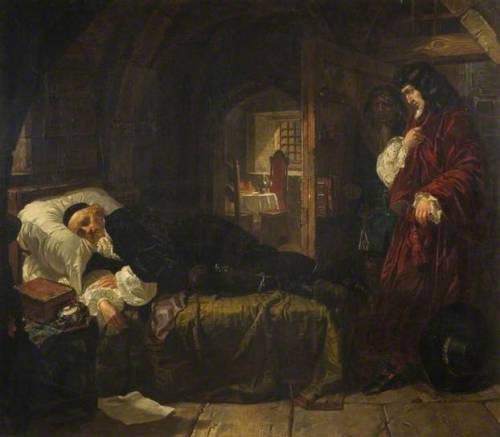Archibald Campbell, 9th Earl of Argyll was born on February 26th 1629 at Dalkeith. A complex figure
Archibald Campbell, 9th Earl of Argyll was born on February 26th 1629 at Dalkeith. A complex figure who featured in the torrid times between and including the two King Charles time.Campbell was an energetic supporter of the royalist cause during the 1650s. His father was executed for treason in 1661, and although he was imprisoned, the new earl was released and restored to his titles and estates. A member of the Scottish Privy Council and an Lord of Session, he was condemned to death in 1681 on a highly dubious charge of treason and libel, he escaped from prison in an almost comical way, that any fool could have saw through, leading me to believe that the guards were possibly bribed. His daughter-in-law, Lady Sophia Lindsay, obtained permission to visit him in his confinement. She brought with her a servant who, she claimed, had recently been in a rather serious fight, resulting in severe facial injuries. That of course explained the bandages in which his head was entirely swathed, completely obscuring his identity. If you can see where this is headed, you are more astute than the entire garrison of Edinburgh Castle! The naïve-seeming scheme was to have Campbell swap clothes and wigs with the servant, wrap his head in bandages, and simply walk out of the building with Lady Sophia after her visit.The Lady, demonstrating what must have been Oscar-worthy acting ability, left Campbell’s quarters in floods of tears, and was escorted by her “servant” back to her coach. Outside, Campbell ingeniously climbed onto the back of the coach rather than into it, preventing anyone from realising that he was a member of the aristocracy by proving that he could maintain a grip on a moving vehicle. Once outside the Castle’s bounds, he slipped quietly off down an alleyway to a friend’s house, from which he was smuggled under the name “Mr Hope” down to London.After his escape, the Earl disappeared for much of his remaining life. Naturally, as a fugitive (and now actively engaged in resistance to the coming succession of James), his location was kept a closely guarded secret, although a few letters revealing his general location and activities remain.However, he returned to Scotland in style in April 1685, at the head of an invading army supporting the Monmouth Rebellion against James II/VII (who had taken the throne in February, following Charles II’s death). He made several raids, which varied in success between “fleeting” at Inveraray and “utterly pointless failure” at Greenock. His forces gradually dwindled until he was left with only his son John and three friends. After being refused shelter by an old servant, they were arrested in June 1685.Campbell was immediately re-tried and sentenced to die exactly as his father had, beheaded at the Mercat Cross in Edinburgh twelve days after his arrest. Surprisingly, he was again allowed a visit by his wife and daughter-in-law prior to his execution, although this time there was presumably someone on hand to check that neither of the ladies leaving the premises after their visit were other than they appeared.Three pics show Campbell, the third being the most interesting, well at least to me! It shows The Last Sleep of Argyle, a Victorian painting it’s history is drawn from the historian Robert Wodrow’s story about of Argyll being found sleeping soundly by an official bringing him for execution. -- source link
#scotland#scottish#history


